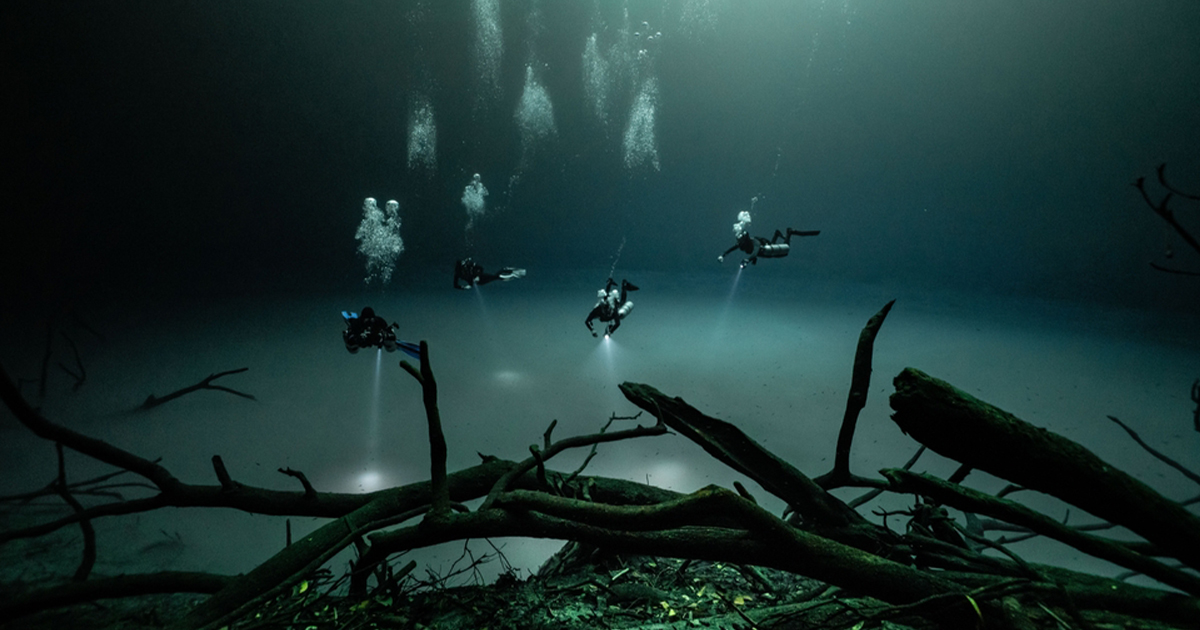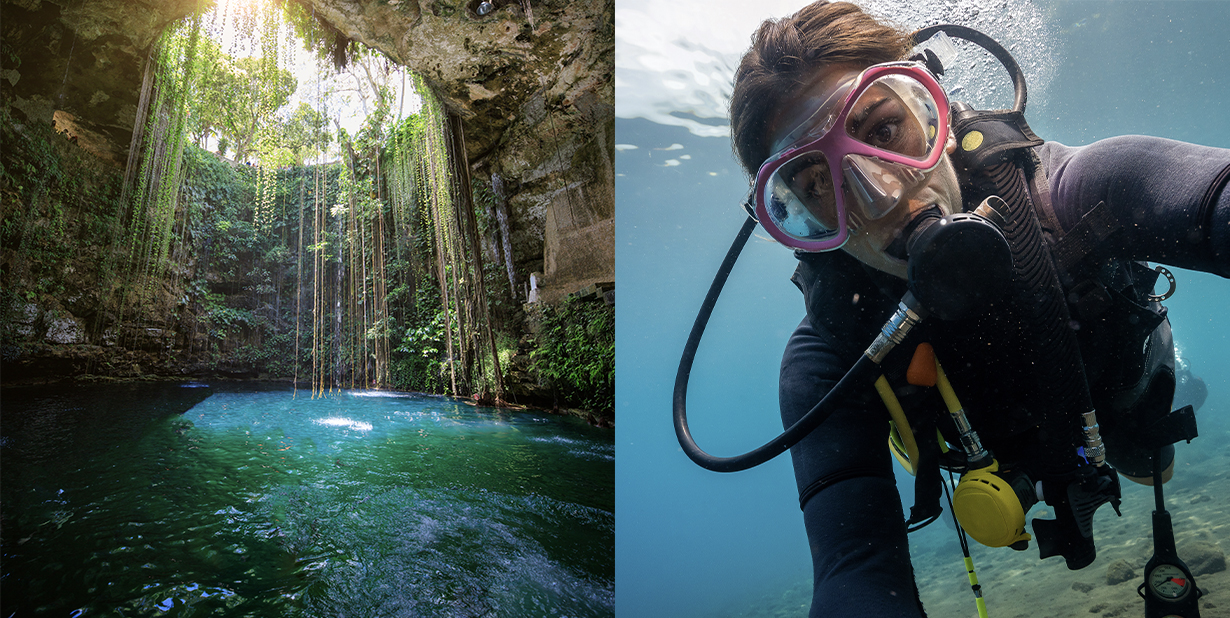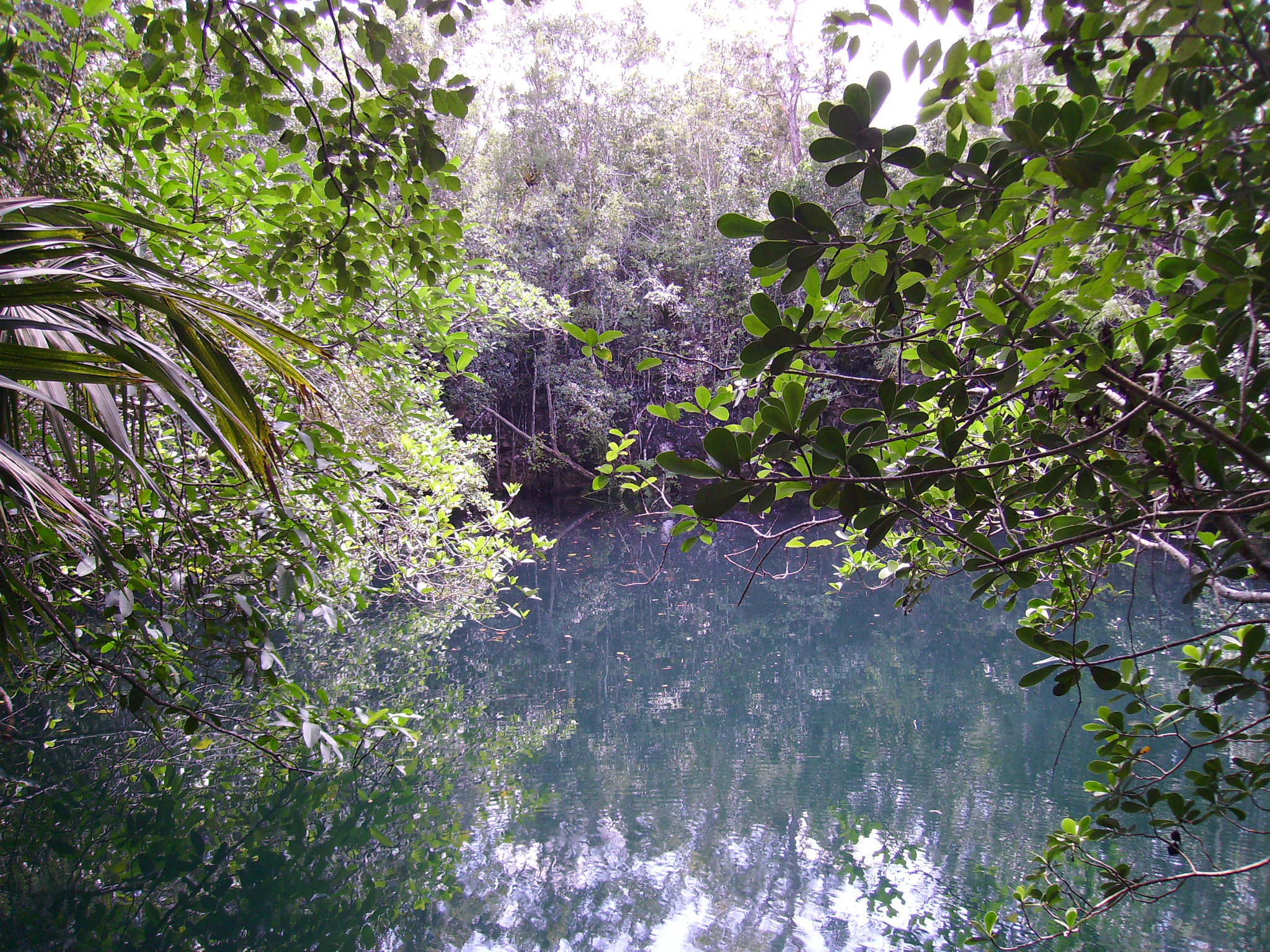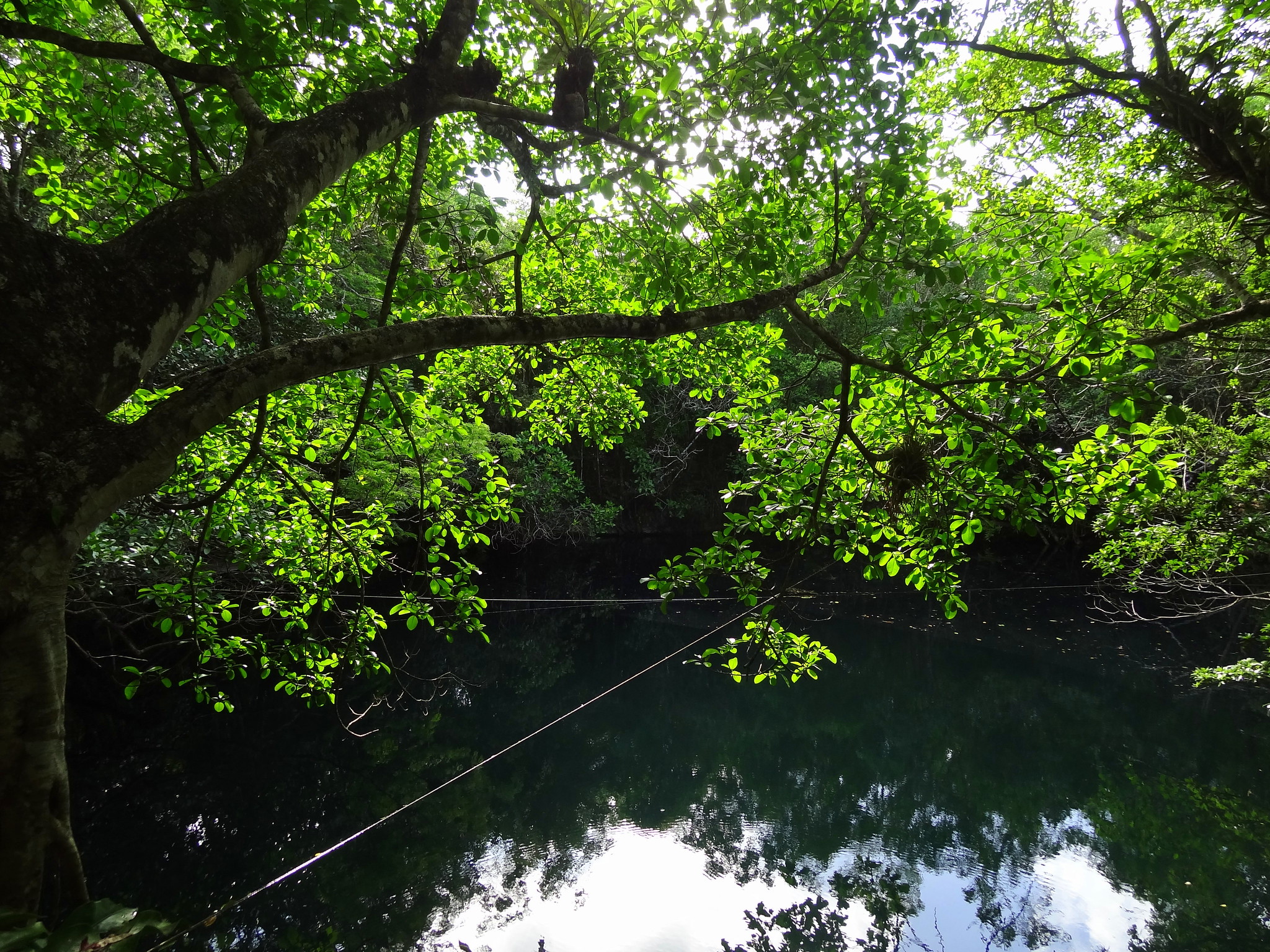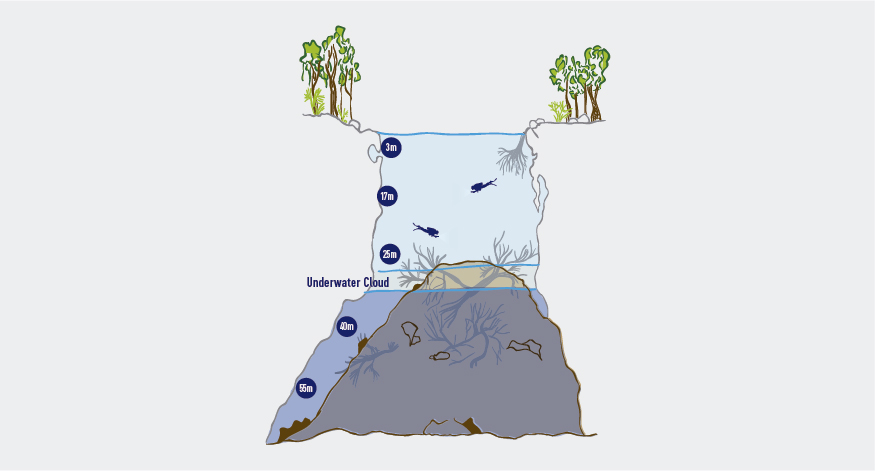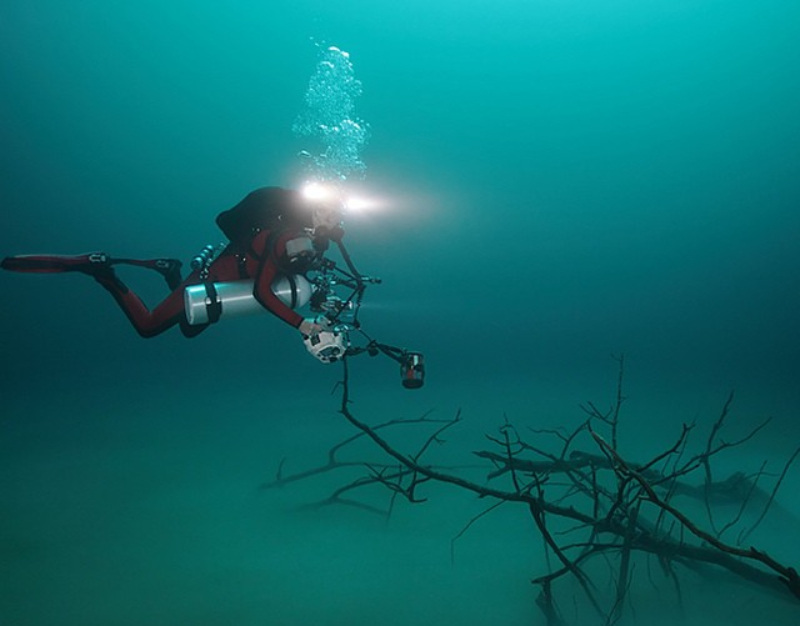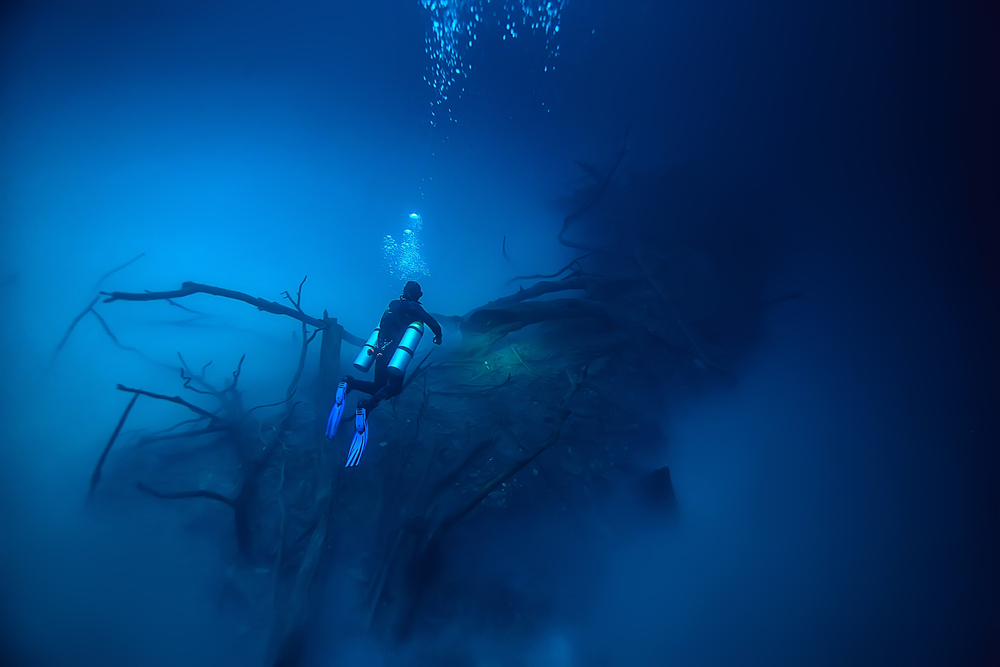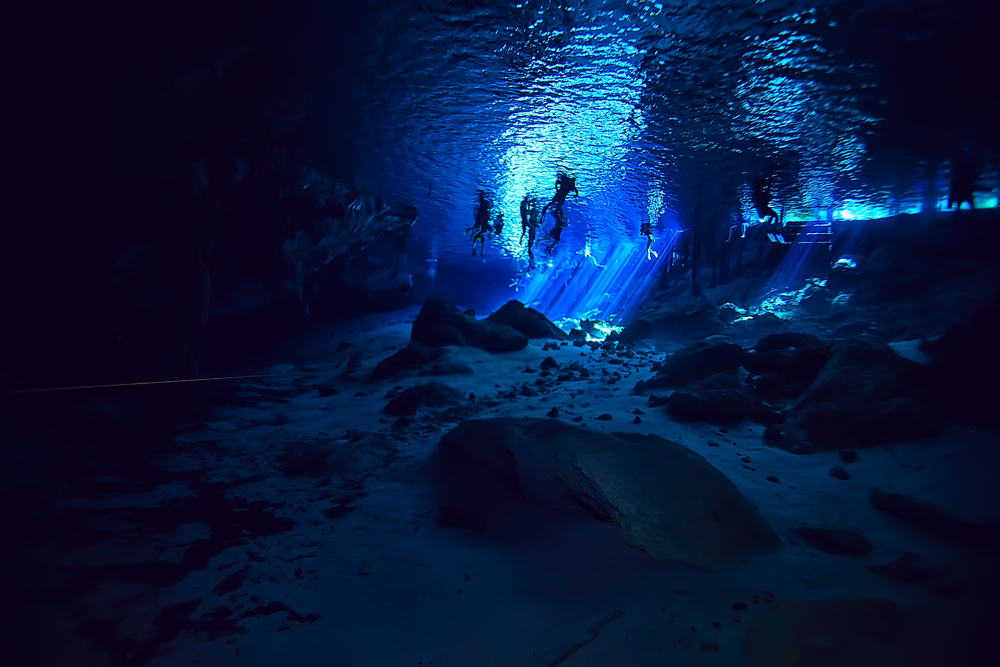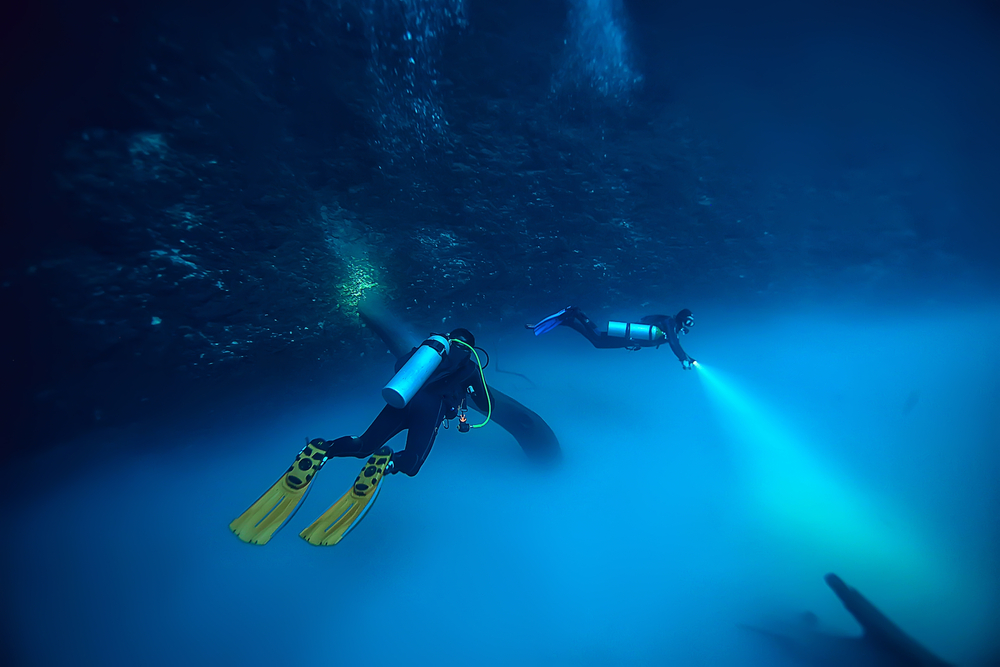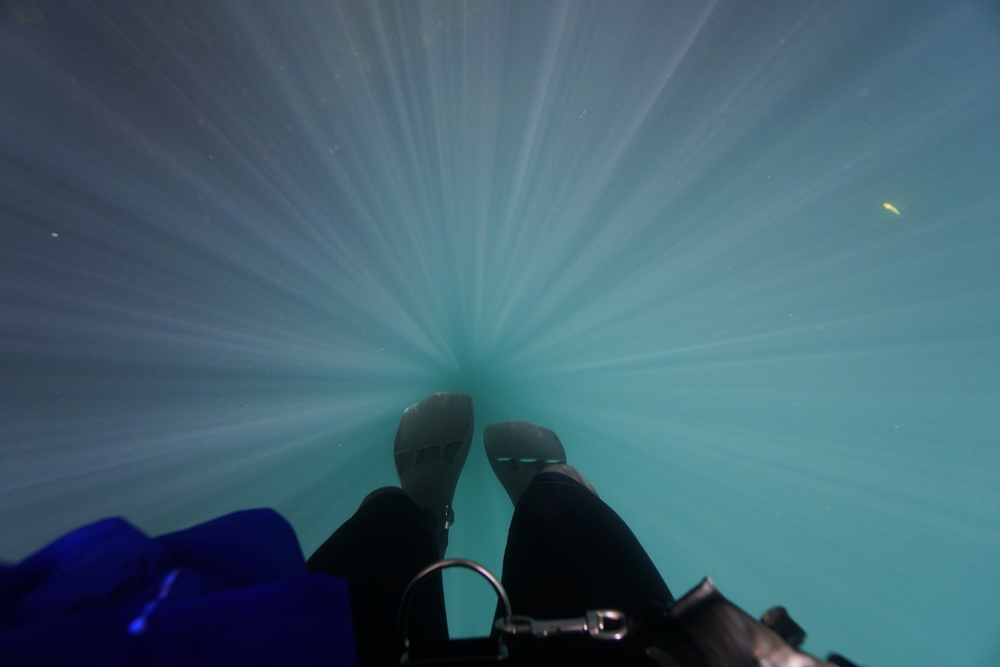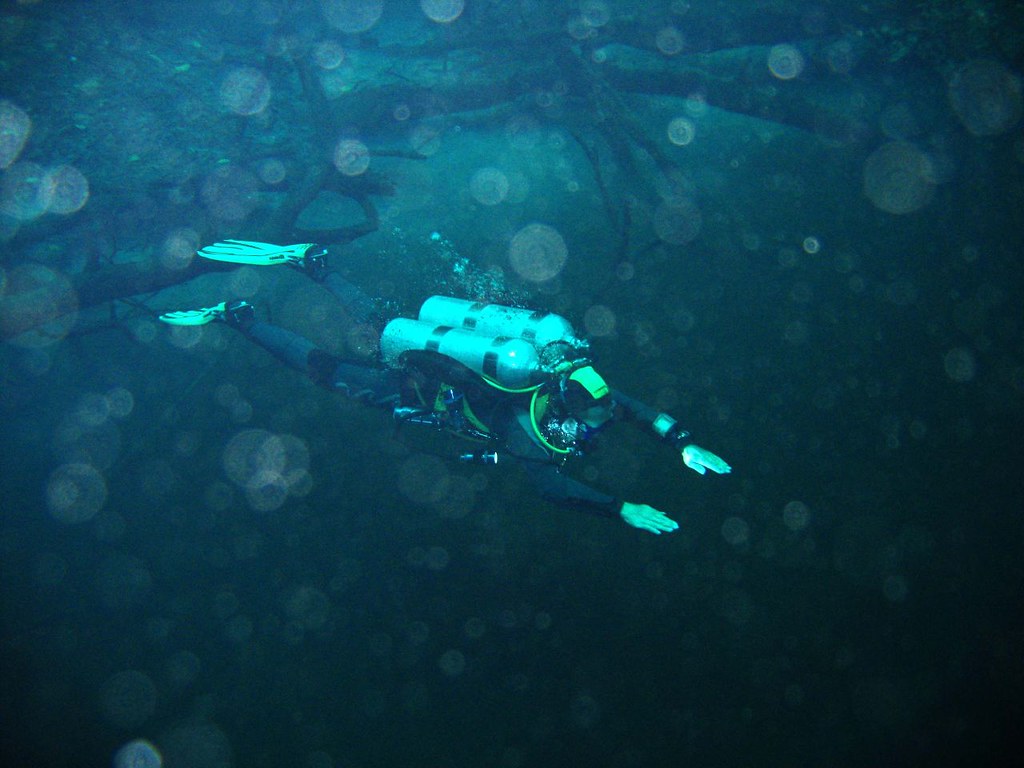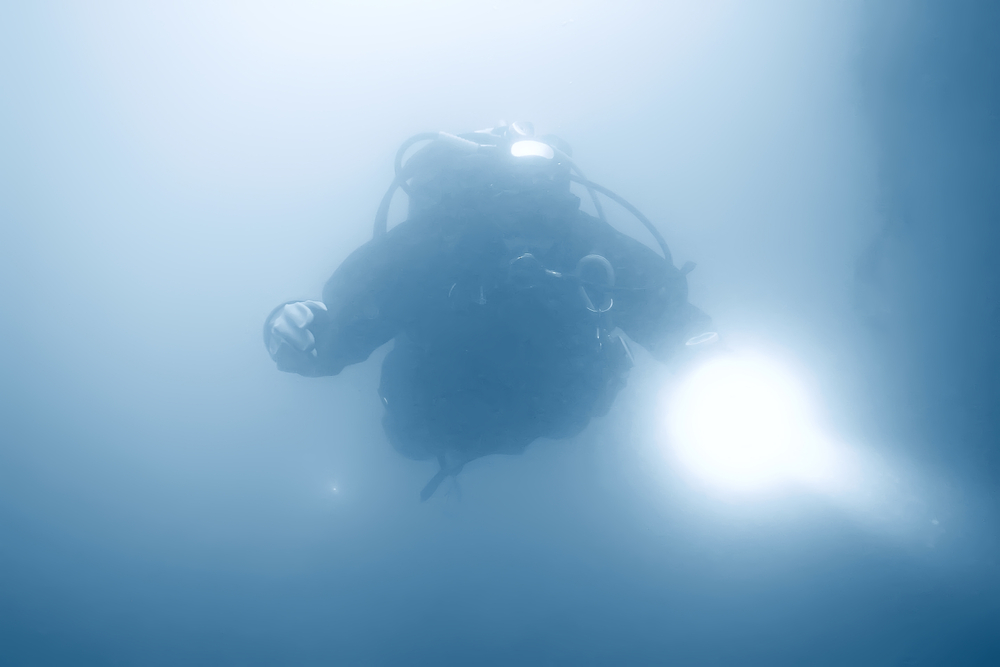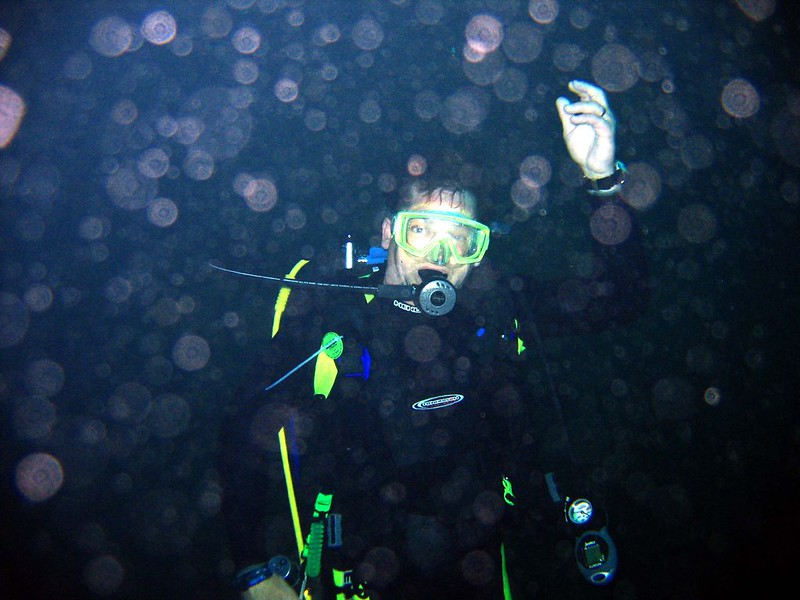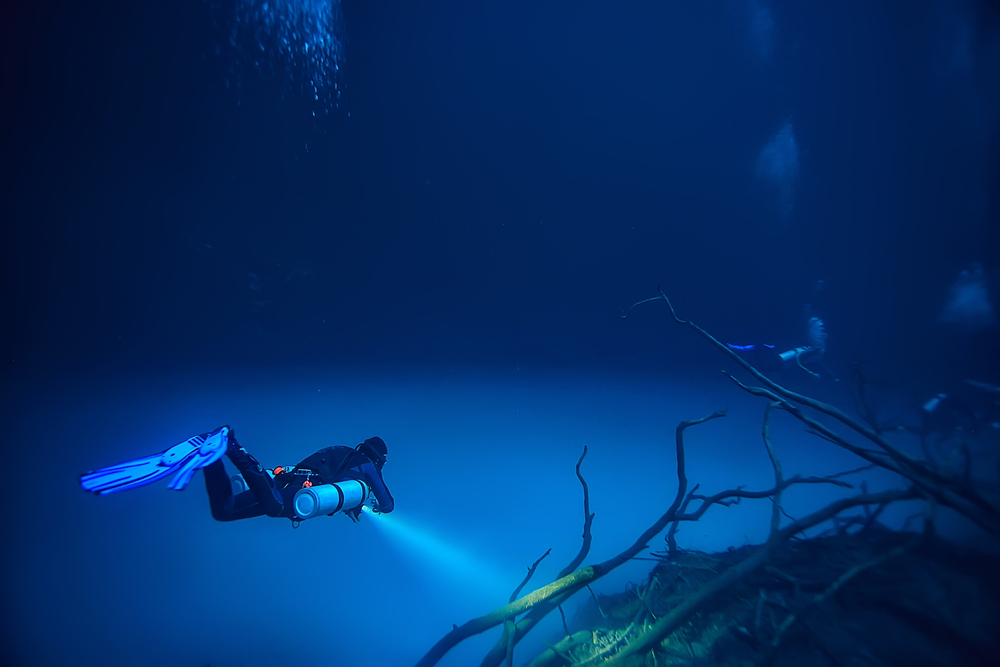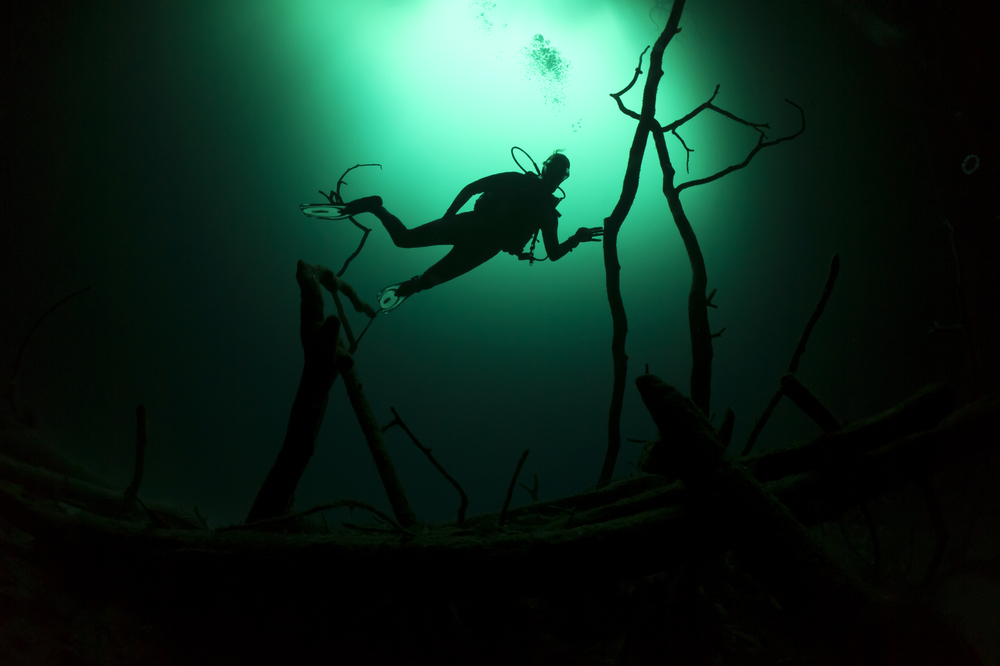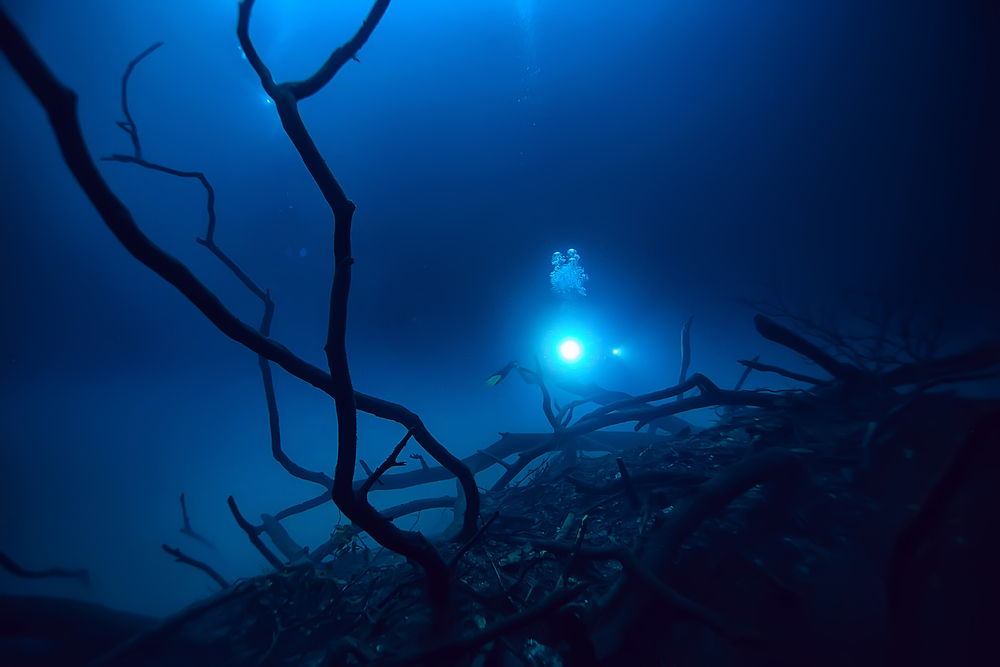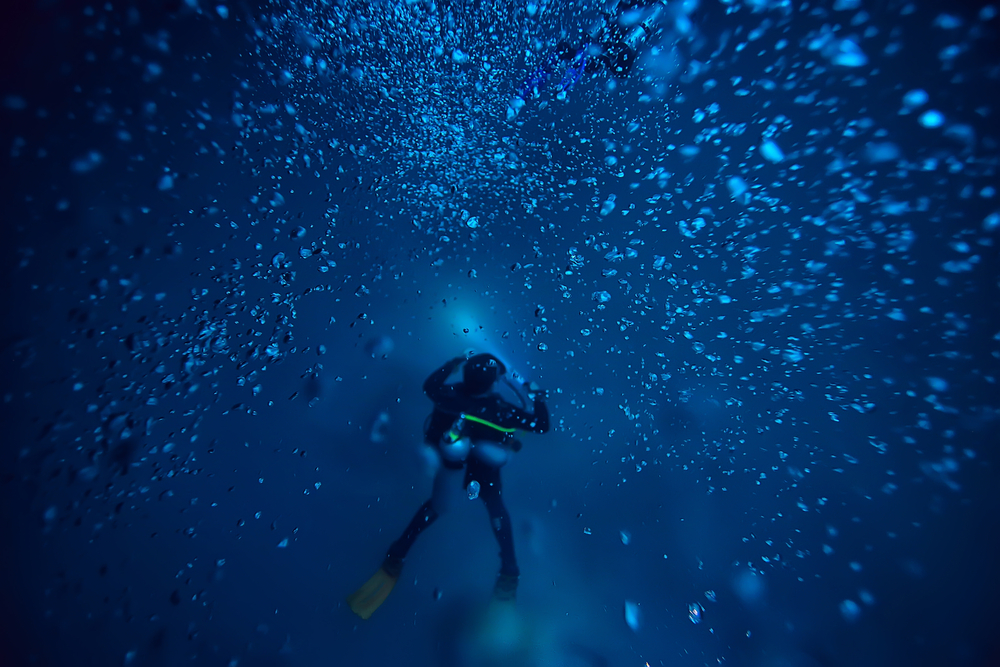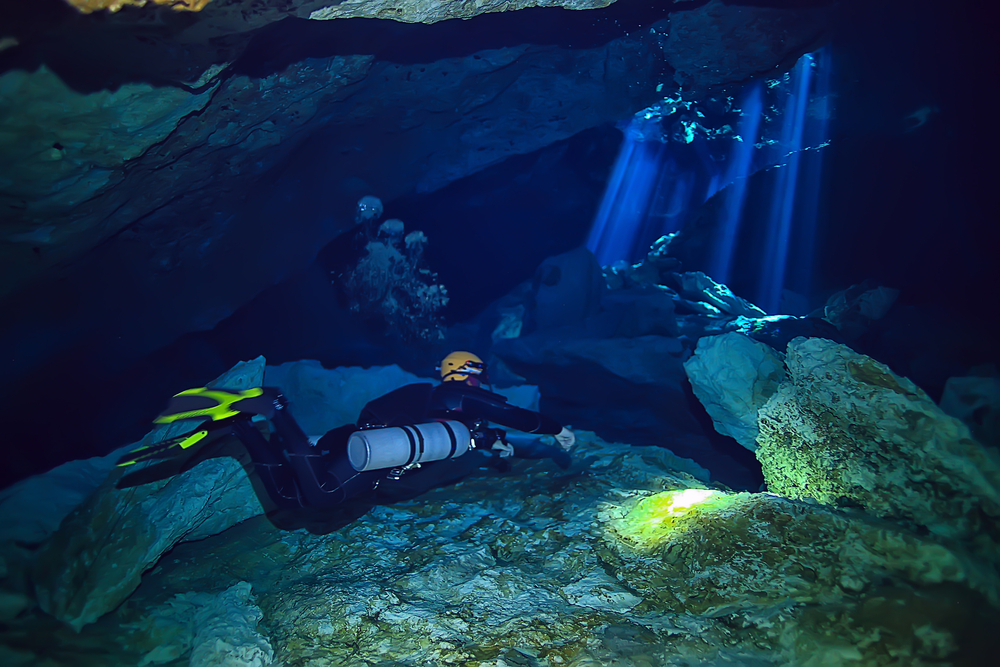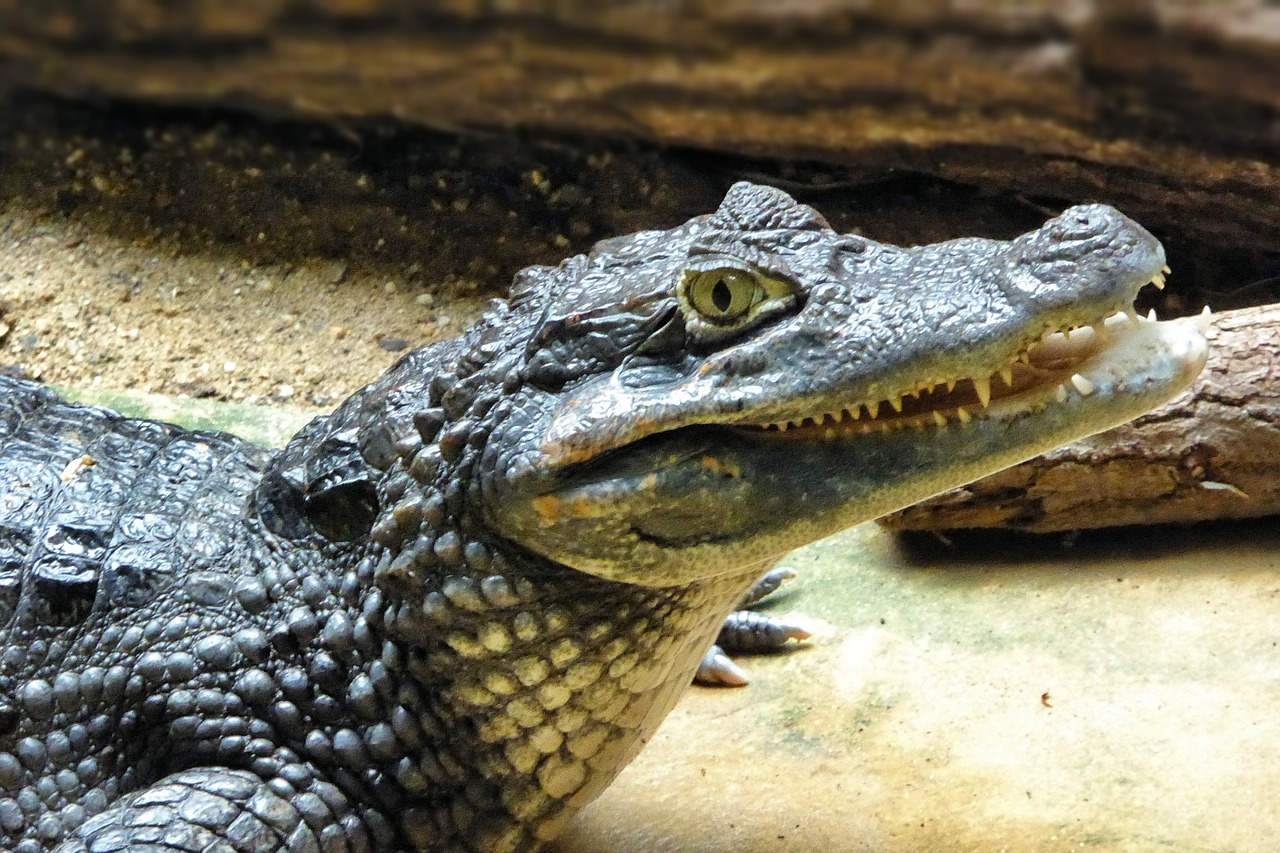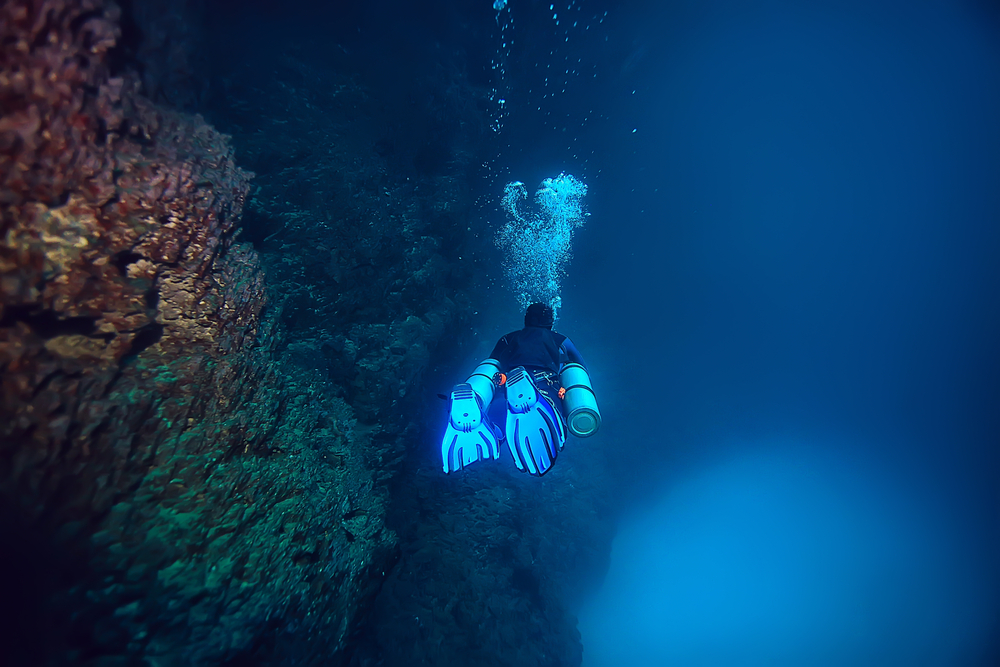The World’s Most Unique Dive
In the Mexican jungle just outside the ruins of the Mayan city of Tulum, there is a series of sinkholes and caves that lead to a magical underwater world.
One of the openings to this submerged wonder is a flooded cave known as Cenote Angelita, which hides a magical secret of its own.
What is it?
From above ground, the Angelita Cenote looks like a beautiful, large pond deep within the dense jungle. But below the surface it is a massive flooded cave that drops a whopping 204-feet deep, hiding many intriguing secrets.
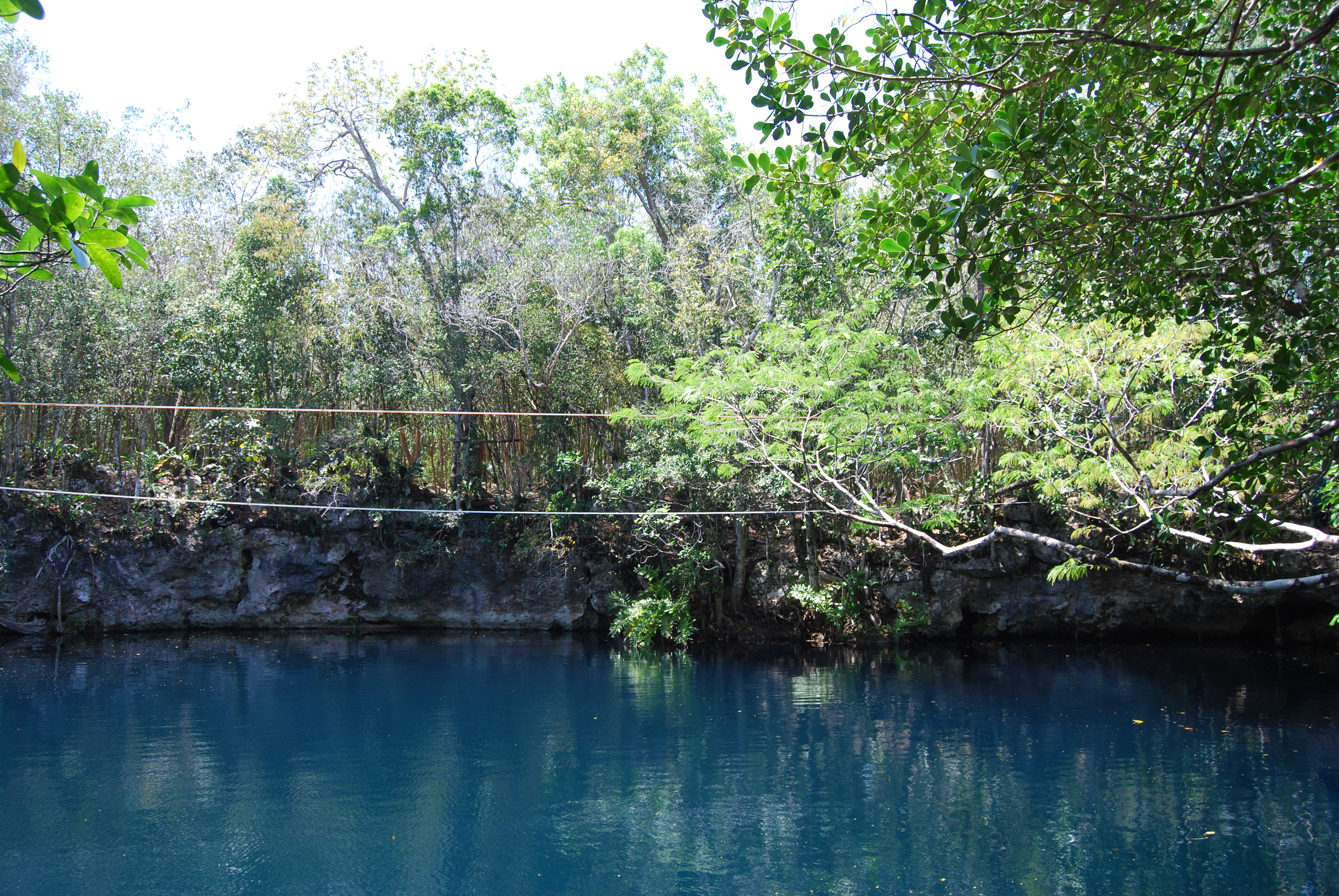 Offthebeatonpath, CC BY-SA 4.0, Wikimedia Commons
Offthebeatonpath, CC BY-SA 4.0, Wikimedia Commons
How was it created?
The cenote was created when the ground collapsed and water poured in, slowly deteriorating the limestone walls, hollowing out the space.
It was once worshipped by the Mayans as a holy site, hence its name; “cenote” meaning “sacred well” in Mayan. "Angelita" means "Little Angel".
What is the water like?
The freshwater inside the cenote is eerily calm and clear. Like in most Mexican cenotes, the water temperature is rather chilly.
It boasts inviting shades of blue and green.
When was it discovered?
Cenote Angelita was only recently discovered by a photographer named Anatoly Beloschin while he was taking a dip in the cenote and decided to see how far it went down.
Sine then, the depths have been explored in great detail.
Why is it so popular?
Since its discovery, it has become a popular diving spot for experienced divers and explorers, looking to experience the secret that lurks about halfway down.
What is so special about it?
About 100 feet down (halfway) inside the cenote, divers will find an illusionary floor that forms a border between freshwater and saltwater—also known as the halocine.
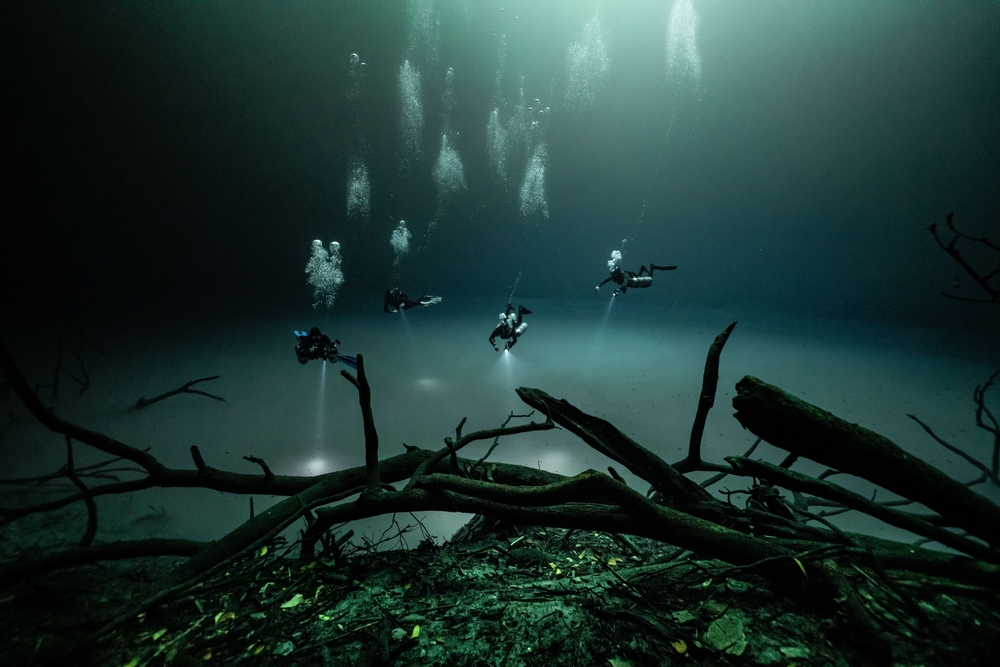 Marianna Tombini, Shutterstock
Marianna Tombini, Shutterstock
What causes this?
Basically, there is a thick cloud of hydrogen sulfide gas that forms between the saltwater and the freshwater, creating a false floor halfway to the bottom.
Why does this happen?
The saltwater is denser than freshwater, so it will always stay on the bottom. When the gas mixes with the saltwater, it also become denser than the freshwater and sits below it.
What is the result?
The way the 3 layers form gives the illusion of a stream of water within the cave that follows along the mountainous landscape deep down.
What does it look like?
The illusion is a spectacular sight—it looks like a river that runs underwater.
To add to the effect, there are logs and remains of vegetation that fall into the cenote and sink, creating an “underwater forest” among this fascinating cloudy stream.
Where does the gas come from?
The hydrogen gas is released by microbes that thrive on the sea floor when they breakdown organic waste. As debris and bacteria fall into the cenote, as they break down, they release hydrogen sulfide.
Can you pass through the cloud?
Yes, you can swim through the cloud to reach the darker, deeper parts of the cenote—which is also the saltwater portion of the cenote.
Is the gas toxic?
Yes, the hydrogen sulfide is poisonous and has a very sulfurous smell—like rotten eggs. It is safe to dive in and around since you are breathing from your dive tanks.
However, you can still smell the rotten egg smell through your regulator.
What is below the cloud?
Below the cloudy “river” the dark cave tunnels continue for another 100 feet or so, mostly full of jungle debris. It is pitch black and diving becomes increasingly dangerous.
But in the middle of the cenote, just below the cloud lies something else.
What is the mountain made of?
Just below the cloud is a small mountain of jungle debris. It consists of the land that used to cover the cenote before it collapsed, known as a Talus Cone—aka a debris mound.
What does the Talus Cone look like?
It piles up in a pyramid shape from the very bottom of the cenote, and the peak reaches just above the cloud, almost like an island poking up out of the mist.
The mound of debris has full sized trees that stand up and poke out, like an eerie dead forest.
Is it safe?
The water inside the cenote has been deemed safe for swimming as the gas remains deep down.
While diving though, it is highly suggested that only experienced divers with appropriate safety equipment journey all the way to the bottom.
19. Why is it dangerous?
Below the cloudy river, the cenote gets extremely dark. You must continue diving downward through the thick, dark cloud before you reach the clear saltwater—but it is still pitch black.
Many divers panic and get lost.
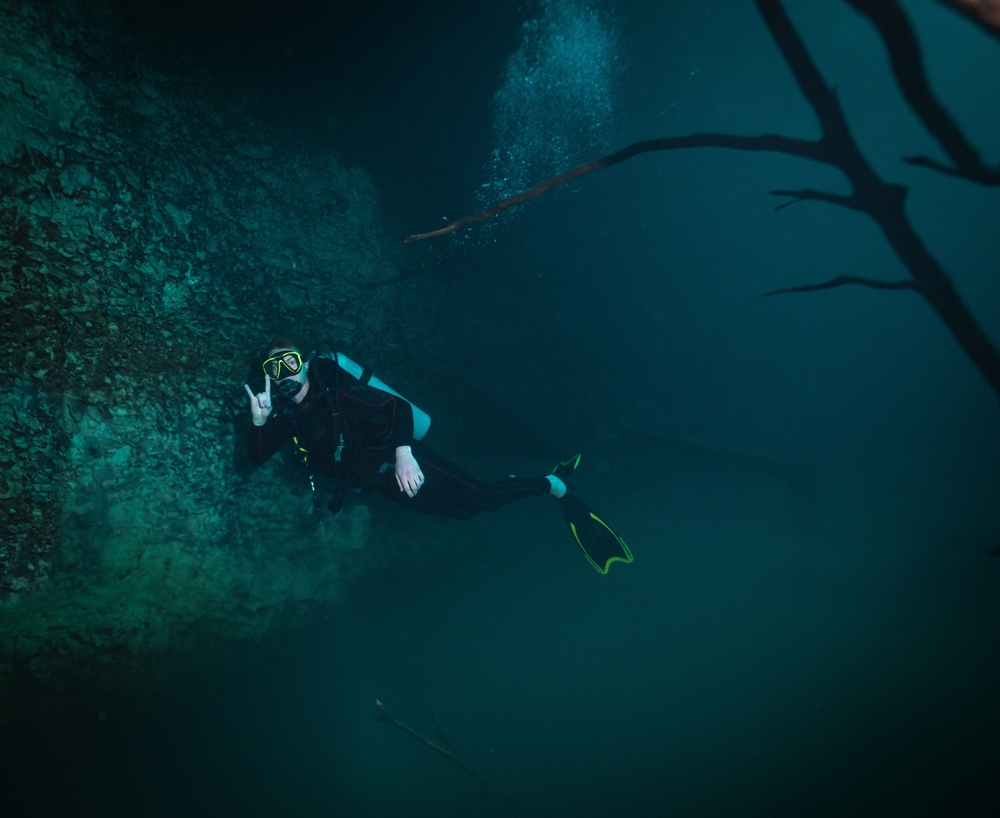 phmarcosborsatto, Shutterstock
phmarcosborsatto, Shutterstock
What else can you find in Cenote Angelita?
On the slow ascent back up through the cenote, divers report seeing fallen leaves that appear to be stuck suspended strangely still at different depths.
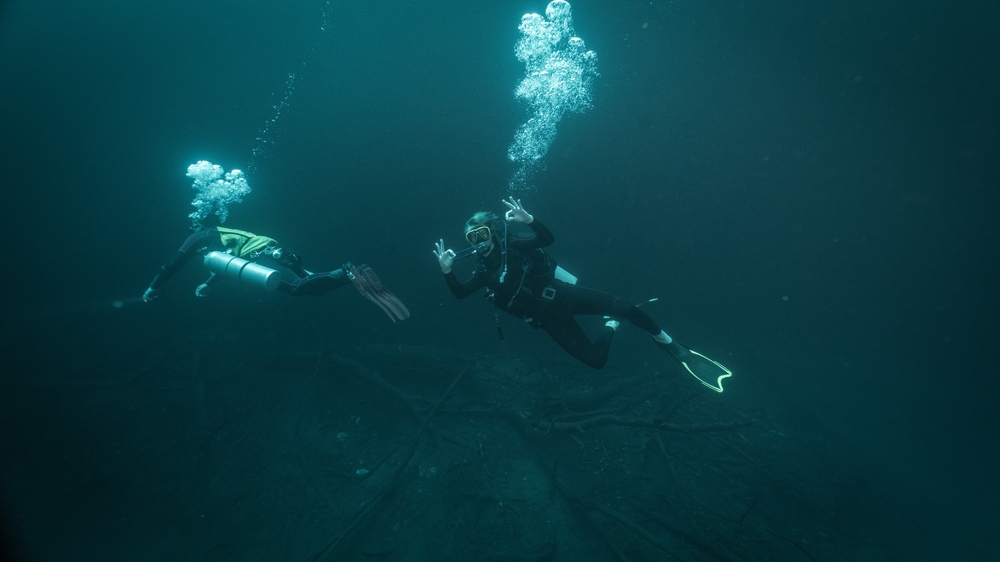 phmarcosborsatto, Shutterstock
phmarcosborsatto, Shutterstock
What are the cave walls like?
The walls of the cenote cave are intriguing and creepy. It has tall vertical walls filled with nooks and crannies of various size and depth that divers can peer into.
The walls are covered with a pinkish-red color.
What wildlife lives in the cenote?
One of the most interesting creatures you might come across at Cenote Angelita is a small cayman (alligator). There is one particular little one that is often seen by tourists, sun-tanning along the edges.
There may also be some species of fish and aquatic creatures.
What can be found at the bottom of cenotes?
Generally speaking, the cenotes have an interesting history, and as such there are many treasures usually found at the bottom of some cenotes, including, jade, gold, pottery, and even human remains.
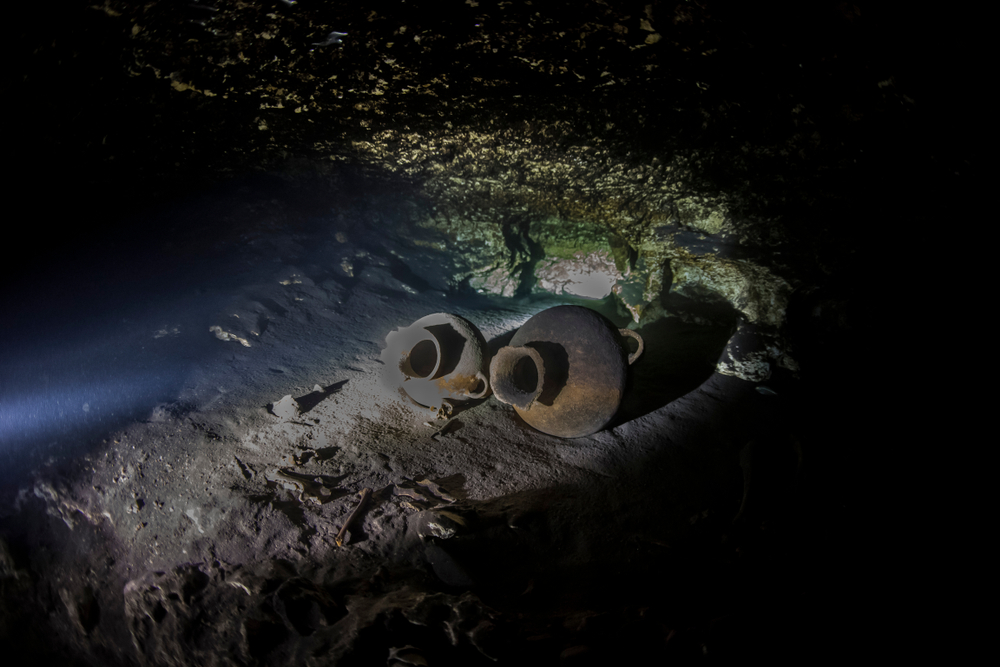 Dmitriy Efremychev, Shutterstock
Dmitriy Efremychev, Shutterstock
Where would those items come from?
The cenotes were formed thousands of years ago during the Mayan civilization. Believing that the cenotes were tunnels to the underworld, they were often used for ceremonial rituals which included human sacrifice.
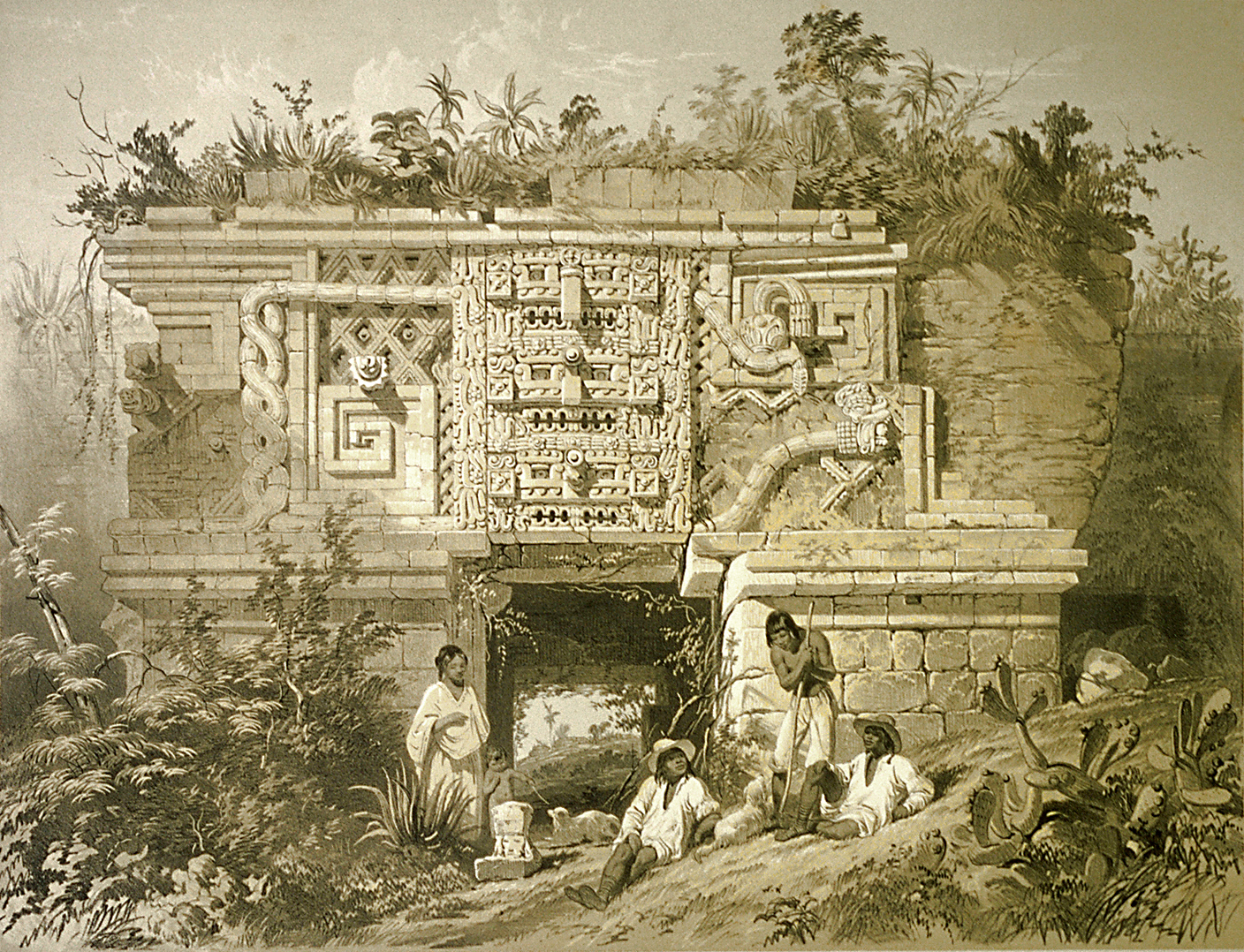 Frederick Catherwood, Wikimedia Commons
Frederick Catherwood, Wikimedia Commons
Final Thoughts
Cenote Angelita is a stunning natural phenomenon that only experienced divers can appreciate. The mystical cloud that forms 100 feet below its surface forms the illusion of an underwater river that flows around large and creepy dead trees and jungle debris.
Once a Mayan ritual site, it is now a popular tourist destination for swimming, snorkeling, and deep diving.

